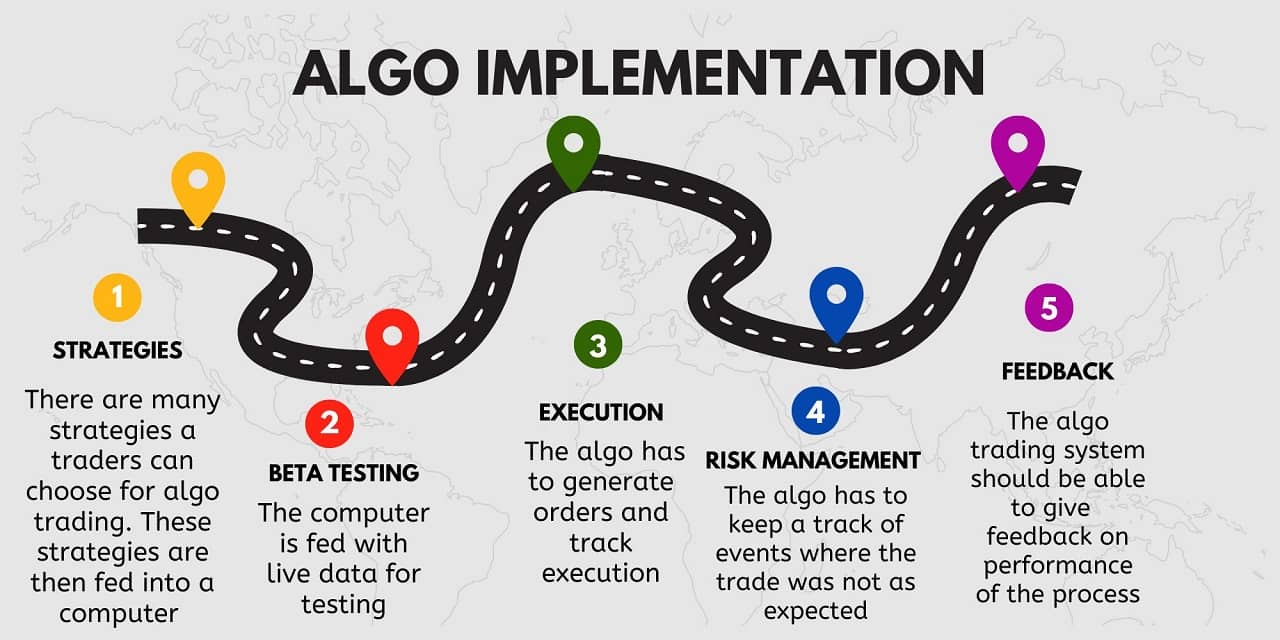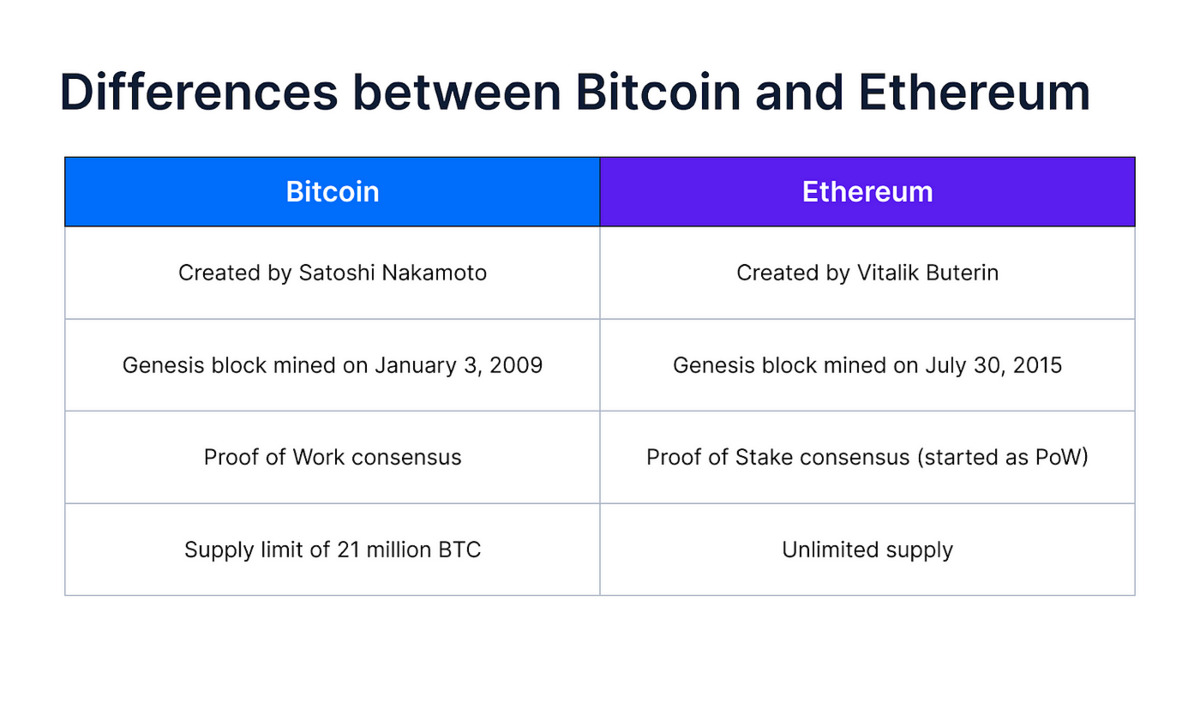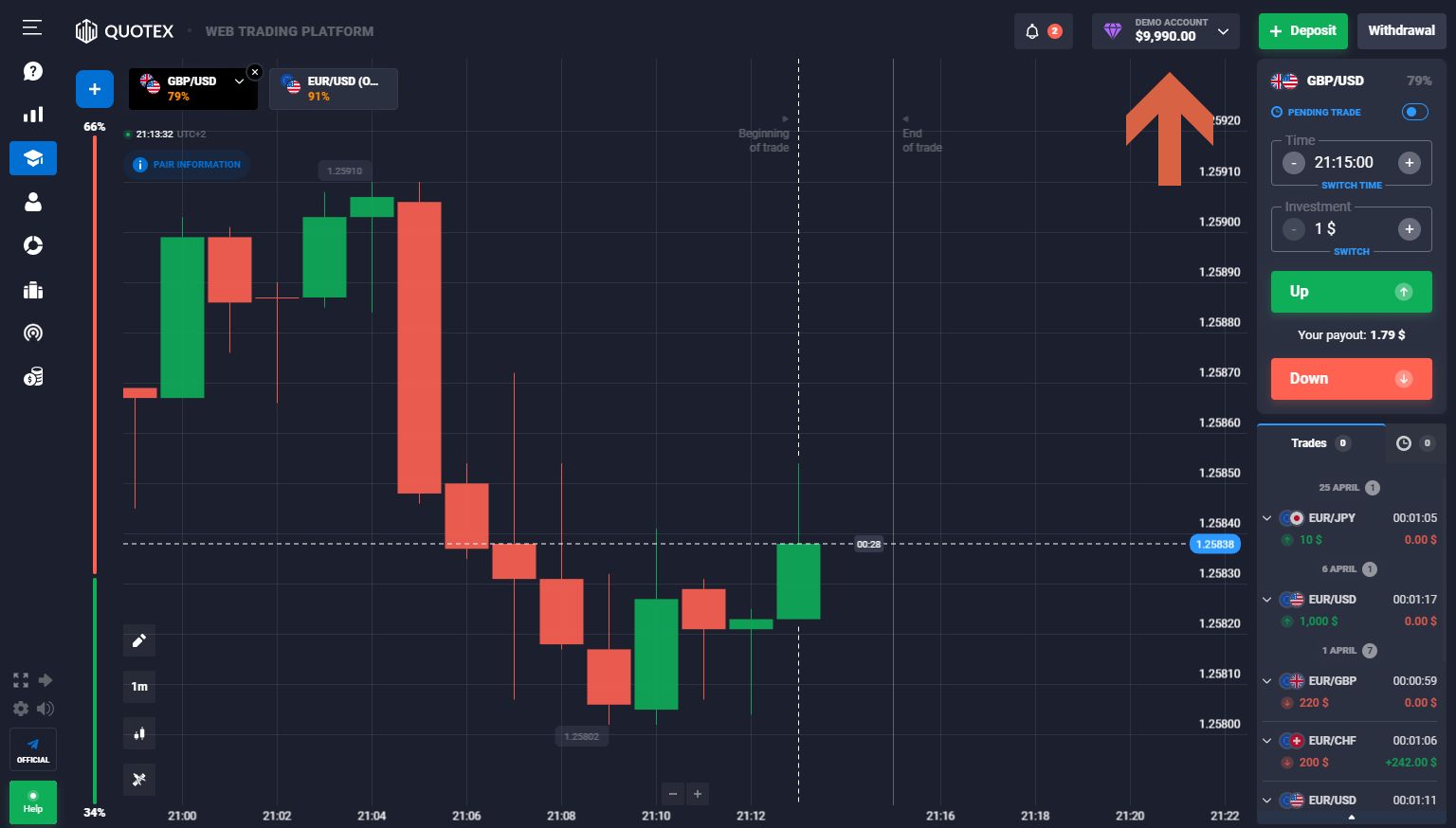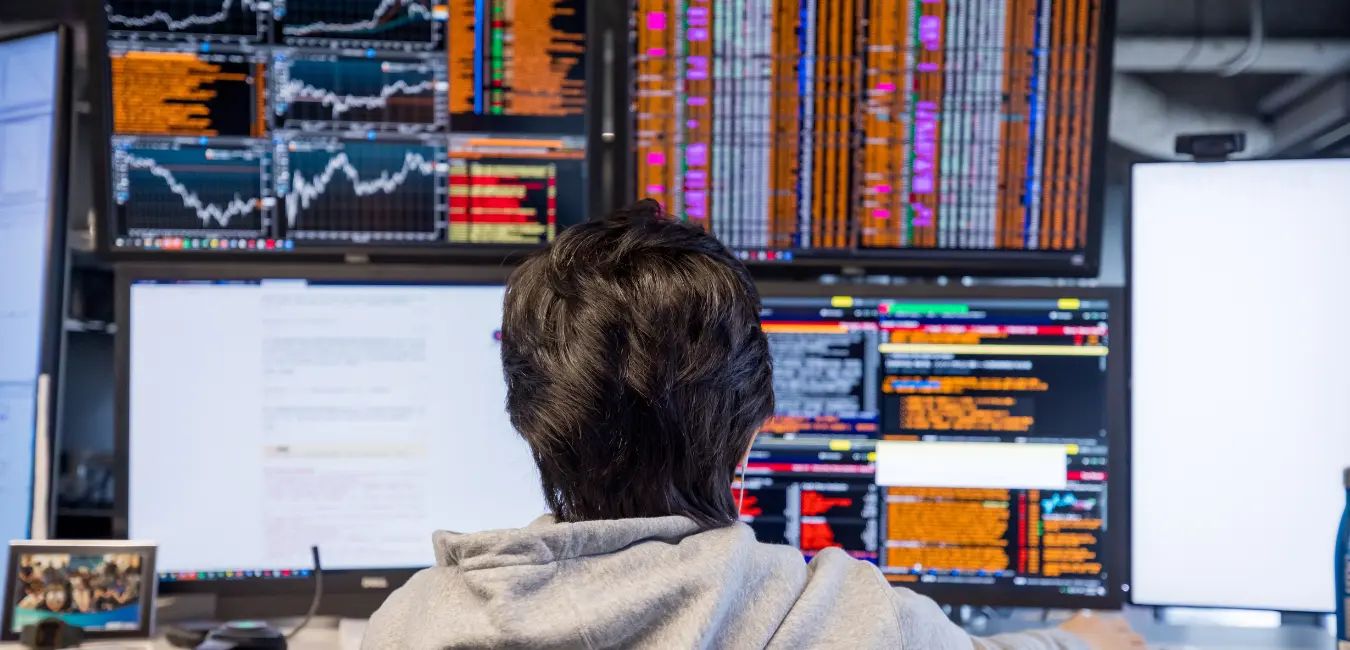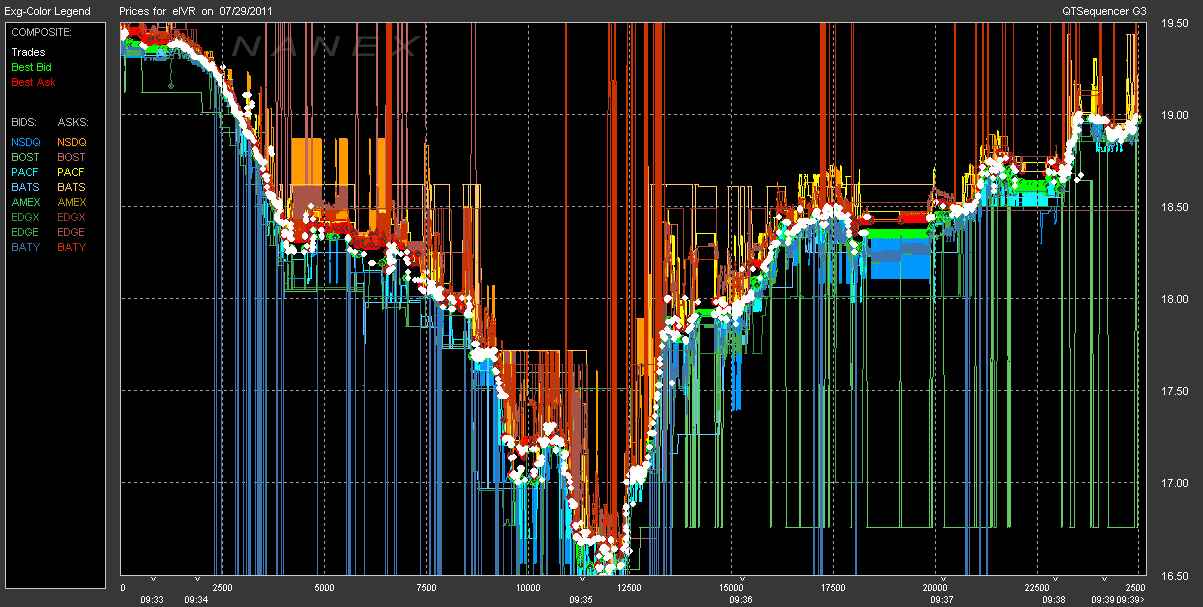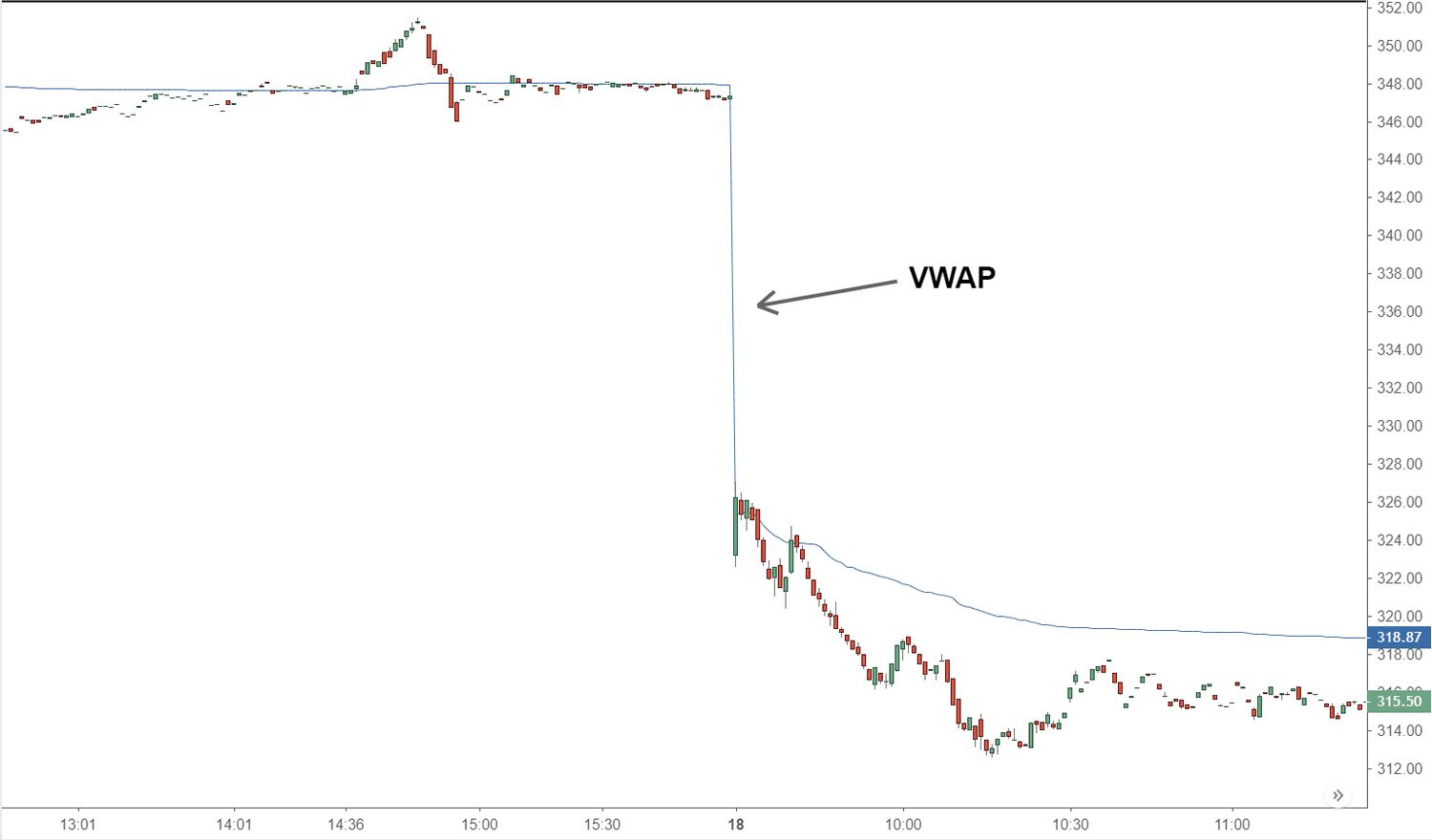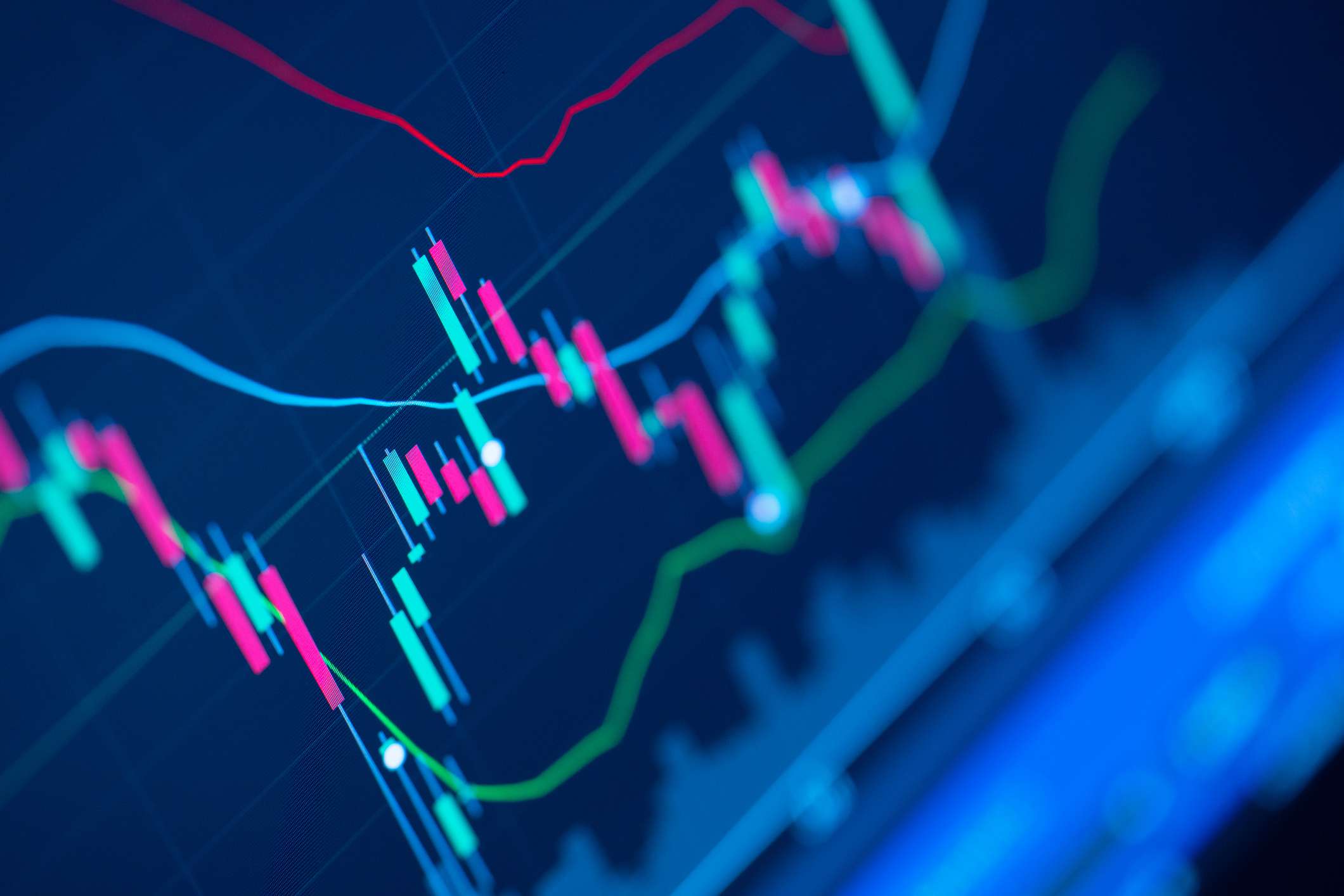Introduction
Algorithmic trading has revolutionized the financial markets, transforming the way trades are executed. With the advancement of technology, traders and investors now have access to powerful tools and systems that can execute trades automatically based on pre-defined rules and strategies. This innovative approach to trading has gained popularity due to its ability to execute trades with speed, accuracy, and efficiency.
In simple terms, algorithmic trading, also known as algo trading or black-box trading, refers to the use of computer programs to automate the trading process. These programs, or algorithms, are designed to analyze vast amounts of market data, identify patterns, and execute trades based on predefined rules and parameters. This eliminates the need for human intervention and enables trades to be executed at lightning-fast speeds.
One of the key benefits of algorithmic trading is its ability to remove human emotions from the trading process. Emotions such as fear, greed, and hesitation can often cloud judgment and lead to poor trading decisions. By automating the trading process, algorithmic trading ensures that trades are executed based on objective rules and parameters, thus minimizing the impact of emotional biases.
Algorithmic trading can be used by a wide range of market participants, including individual investors, hedge funds, and large financial institutions. The use of algorithms in trading has become increasingly popular due to its numerous advantages. For example, algorithmic trading allows for the execution of trades across multiple markets and timeframes simultaneously, which would be virtually impossible for a human trader to achieve manually.
Furthermore, algorithmic trading enables traders to take advantage of opportunities in the market that may arise and disappear within seconds. The algorithms can be programmed to react instantly to changes in market conditions and execute trades at lightning-fast speeds, ensuring that traders can capitalize on even the smallest price movements.
In the following sections, we will explore in detail how algorithmic trading works, the different types of algorithmic trading strategies, the role of data analysis and market research, the process of building and testing algorithms, and the risks and challenges associated with algorithmic trading. We will also delve into the role of artificial intelligence in enhancing algorithmic trading strategies.
What is Algorithmic Trading?
Algorithmic trading, also known as algo trading or black-box trading, refers to the use of computer algorithms to automate the execution of trades in the financial markets. It involves the use of advanced mathematical models and data analysis techniques to identify trading opportunities and execute trades at high speeds.
At its core, algorithmic trading relies on a set of predefined rules and parameters that dictate when and how trades should be executed. These rules can be based on a wide range of factors, including price movements, market trends, volume indicators, and various technical and fundamental analysis tools.
One of the key advantages of algorithmic trading is its ability to remove human emotions and biases from the trading process. Human traders are often susceptible to making impulsive or irrational decisions based on emotions such as fear, greed, or even overconfidence. Algorithmic trading eliminates these emotional factors by executing trades based solely on objective rules and algorithms.
Algorithmic trading systems can be designed to focus on different types of trading strategies, depending on the goals and preferences of the trader. These strategies can range from simple ones, such as trend following or mean reversion, to more complex strategies that involve multiple indicators and patterns.
There are various types of algorithmic trading strategies that traders can utilize. Some common examples include:
- Trend following: This strategy seeks to identify and capitalize on trends in the market. It involves buying when the price is rising and selling when the price is falling.
- Mean reversion: This strategy assumes that prices will eventually revert to their average or mean value. Trades are executed when the price deviates significantly from the mean, with the expectation of profiting from the price returning to its average.
- Arbitrage: This strategy aims to exploit price discrepancies between different markets or assets. Trades are executed simultaneously to take advantage of these pricing inefficiencies and generate profits.
- Pairs trading: This strategy involves simultaneously buying and selling two correlated assets. Trades are executed based on the deviation in the relationship between the two assets, with the aim of profiting from the convergence or divergence of their prices.
Algorithmic trading systems rely heavily on advanced technology infrastructure and high-speed connectivity to execute trades in real-time. These systems are capable of analyzing large amounts of market data, making complex calculations, and executing trades within fractions of a second.
Algorithmic trading has become increasingly popular in recent years, with a significant portion of trading volume in financial markets being executed through automated trading systems. The ability to execute trades quickly, efficiently, and without emotions has made algorithmic trading an attractive option for both individual traders and financial institutions.
In the next sections, we will explore in more detail how algorithms work in trading, the process of building and testing algorithms, and the risks and challenges associated with algorithmic trading.
Benefits of Algorithmic Trading
Algorithmic trading offers several benefits that have made it a popular choice among traders and investors in the financial markets. These benefits include:
- Speed and Efficiency: One of the key advantages of algorithmic trading is its ability to execute trades at high speeds. By utilizing advanced technology and automation, algorithmic trading enables trades to be executed within milliseconds, ensuring that traders can take advantage of even the smallest price movements. This speed and efficiency also reduce the risk of slippage, where trades are executed at prices different from the intended entry or exit levels.
- Removal of Emotional Bias: Human traders are often influenced by emotions such as fear, greed, and impatience, which can lead to poor trading decisions. Algorithmic trading eliminates these emotional biases by executing trades based on predefined rules and parameters. This ensures that trades are executed objectively and without the influence of human emotions, leading to more consistent and disciplined trading.
- Ability to Trade Multiple Markets and Timeframes: Algorithmic trading systems can monitor and analyze multiple markets and timeframes simultaneously. This allows traders to identify trading opportunities across different markets and execute trades accordingly. Additionally, algorithmic trading systems can monitor and react to market conditions 24/7, even when the trader is not actively monitoring the markets.
- Improved Order Execution: Algorithmic trading systems are designed to execute trades at the best available prices in the market. They can instantly react to changes in market conditions, execute trades at lightning-fast speeds, and ensure that orders are filled efficiently. This improves the overall order execution quality and reduces the impact of market fluctuations on trade outcomes.
- Backtesting and Optimization: Algorithmic trading allows traders to backtest and optimize their trading strategies using historical market data. This enables traders to evaluate the performance of their strategies over different market scenarios and make necessary adjustments to improve their profitability. Backtesting also helps in identifying the strengths and weaknesses of a strategy before risking real capital.
- Diversification: Algorithmic trading allows traders to diversify their trading strategies by incorporating multiple algorithms and trading systems. This diversification can help reduce risk by spreading trades across different markets and strategies, thereby reducing the reliance on a single trading approach.
The benefits of algorithmic trading make it an attractive option for both individual traders and large financial institutions. The ability to execute trades quickly, objectively, and efficiently has significantly enhanced the trading process, enabling traders to capitalize on market opportunities and improve overall trading performance.
In the following sections, we will delve deeper into the different types of algorithmic trading strategies, the process of building and testing algorithms, and the challenges and risks associated with algorithmic trading.
Types of Algorithmic Trading Strategies
Algorithmic trading strategies can be classified into various types, each with its own characteristics and objectives. These strategies are designed to capitalize on different market conditions and trading opportunities. Here are some commonly used types of algorithmic trading strategies:
- Trend Following: This strategy aims to identify and ride on established price trends. Trend-following algorithms analyze historical price data and identify upward or downward trends. When a trend is identified, the algorithm executes trades in the direction of the trend, with the expectation that the trend will continue.
- Mean Reversion: This strategy assumes that prices will eventually revert to their mean or average value. Mean reversion algorithms monitor price deviations from the mean and execute trades when prices become overextended. The expectation is that the price will revert back to its mean, resulting in a profitable trade.
- Arbitrage: Arbitrage strategies aim to exploit price discrepancies between different markets or assets. These algorithms identify situations where an asset is priced differently across multiple markets and execute trades to take advantage of the price discrepancy. This strategy typically requires high-speed execution and sophisticated technology infrastructure.
- Statistical Arbitrage: This strategy involves identifying relationships between two or more correlated assets and executing trades based on the statistical divergence or convergence of their prices. Statistical arbitrage algorithms monitor the price relationship between the assets and execute trades when deviations from the statistical norm occur.
- Market Making: Market making strategies aim to provide liquidity to the market by constantly placing bids and offers. These algorithms continuously adjust their order prices based on market conditions, ensuring that there is a ready supply of buy and sell orders. Market-making algorithms profit from the spread between the buy and sell prices.
- Pairs Trading: Pairs trading algorithms identify pairs of assets that have historically exhibited a strong statistical correlation. When the relationship between the two assets deviates from historical patterns, the algorithm executes a trade, expecting the relationship to revert to its historical norm. Pairs trading is often used in markets where assets are closely related, such as stocks in the same industry or related commodities.
- Execution Algorithms: These algorithms focus on achieving the best possible execution for a given trade. Execution algorithms break large orders into smaller, more manageable orders and execute them based on predefined rules and market conditions. The goal is to minimize market impact and slippage while efficiently executing the trade.
These are just a few examples of the many algorithmic trading strategies available. Traders and institutions can develop and customize their own algorithms based on their specific trading goals and market preferences. The choice of strategy depends on factors such as risk appetite, return objectives, market conditions, and available technology infrastructure.
In the coming sections, we will explore how algorithms work in trading, the process of building and testing algorithms, and the challenges and risks associated with algorithmic trading.
How do Algorithms work in Trading?
Algorithms play a crucial role in algorithmic trading, as they are responsible for analyzing market data, identifying trading opportunities, and executing trades. Here is a step-by-step overview of how algorithms work in trading:
- Data Analysis and Market Monitoring: Algorithms continuously gather and analyze vast amounts of market data in real-time. This data includes price feeds, volume indicators, news releases, and other relevant information. The algorithms use mathematical models, statistical analysis, and pattern recognition techniques to identify potential trading opportunities.
- Signal Generation: Based on the analysis of the market data, algorithms generate trading signals. These signals indicate when to enter or exit a trade, as per the predefined trading strategy. For example, a trend-following algorithm may generate a buy signal when it detects an established uptrend in the price.
- Risk Management: Algorithmic trading systems incorporate risk management techniques to determine the size of the trade and the appropriate risk exposure. Risk management algorithms consider factors such as account balance, volatility of the asset, and maximum allowable loss to determine the position size.
- Order Routing and Execution: Once a trading signal is generated and risk management parameters are determined, algorithms execute the trade by routing the order to the appropriate exchange or brokerage. Execution algorithms use sophisticated techniques to minimize market impact and slippage, ensuring that the trade is executed at the best possible price.
- Trade Monitoring and Exit Strategies: After the trade is executed, algorithms continuously monitor the market conditions to manage the trade. They may include exit strategies, such as profit targets or stop-loss orders, to automatically close the trade when certain conditions are met. The algorithms may also adjust the exit strategy based on real-time market developments.
- Performance Evaluation and Improvement: Algorithms keep track of the performance of executed trades and evaluate the effectiveness of the trading strategy. They analyze factors such as profitability, win/loss ratio, and risk/reward ratio. Based on this evaluation, the algorithms can be modified, optimized, or replaced to improve trading performance.
To execute these functions, algorithms require advanced technology infrastructure and high-speed connectivity to access and process market data in real-time. They also need reliable data feeds and direct market access to execute trades quickly and efficiently.
Algorithms can be customized and programmed to fit different trading strategies and market preferences. Traders and institutions have the flexibility to adjust parameters, incorporate additional indicators, or create entirely new algorithms to suit their specific trading goals.
In the next sections, we will discuss the process of building and testing algorithms, as well as the risks and challenges associated with algorithmic trading.
Data Analysis and Market Research
Data analysis and market research are fundamental components of algorithmic trading. By gathering and analyzing vast amounts of market data, algorithms can uncover valuable insights and identify potential trading opportunities. Here’s a closer look at the role of data analysis and market research in algorithmic trading:
Data Gathering: Algorithms rely on real-time and historical market data to make informed trading decisions. This data includes price feeds, volume indicators, market news, economic data, and other relevant information. Market data providers and financial institutions offer access to comprehensive data sources that algorithms can utilize.
Market Monitoring: Algorithms continuously monitor the market to detect changes in price, volume, and other market variables. They assess market conditions in real-time, enabling traders to respond swiftly to market developments. By tracking market data, algorithms can identify trading opportunities, such as price trends, breakouts, or reversals.
Technical Analysis: Algorithms employ various technical indicators and chart patterns to analyze market data. These indicators may include moving averages, oscillators, trend lines, and support and resistance levels. By applying mathematical calculations and statistical models to historical price data, algorithms can identify patterns and trends that may indicate potential trading opportunities.
Fundamental Analysis: In addition to technical analysis, algorithms can incorporate fundamental analysis in their decision-making process. Fundamental factors, such as company financials, economic indicators, and geopolitical events, can provide insights into the overall market sentiment and potential price movements. Algorithms can scan and process news releases, earnings reports, and other fundamental data to factor them into their trading decisions.
Sentiment Analysis: Algorithms have the capability to analyze market sentiment based on social media feeds, news sentiment analysis, and other sentiment indicators. By monitoring online discussions and extracting sentiment from news articles, algorithms can gauge overall market sentiment. This can help traders anticipate market reactions and adjust their trading strategies accordingly.
Machine Learning and Artificial Intelligence: Algorithms can leverage machine learning and artificial intelligence techniques to enhance their data analysis capabilities. By training on historical data, algorithms can learn patterns and relationships that may not be apparent through traditional analysis. This allows them to adapt to changing market conditions and improve their ability to identify profitable trading opportunities.
Market Research: Algorithms can also perform extensive market research to identify tradable assets and markets. They can scan and evaluate multiple markets simultaneously, searching for trading opportunities across various asset classes. Market research may involve analyzing market correlations, sector performance, economic factors, and other market dynamics to identify potential trading strategies.
Data analysis and market research are vital for algorithmic trading systems to make informed and data-driven trading decisions. By leveraging advanced analytical techniques and extensive market data, algorithms can identify patterns, trends, and anomalies to generate high-probability trading signals.
In the following sections, we will explore the process of building and testing algorithms, as well as the risks and challenges associated with algorithmic trading.
Building and Testing Algorithms
Building and testing algorithms is a crucial process in algorithmic trading. It involves designing, developing, and fine-tuning the algorithms to ensure they perform effectively and generate accurate trading signals. Let’s explore the steps involved in building and testing algorithms:
Defining the Trading Strategy: The first step in building an algorithm is to define the trading strategy. Traders need to determine the criteria for entering and exiting trades, including which technical indicators to use, the risk management parameters, and the timeframes for monitoring the market.
Coding and Programming: Once the trading strategy is defined, it needs to be translated into a computer program. Traders or developers with programming skills can use languages such as Python, C++, or MATLAB to write the code that will drive the algorithm. The code should incorporate the rules and logic of the trading strategy, as well as any additional features or functionalities required.
Backtesting: Backtesting involves running the algorithm on historical market data to assess its performance. This process allows traders to evaluate how the algorithm would have performed in past market conditions. Backtesting helps identify the strengths and weaknesses of the algorithm and provides insights into its profitability, risk, and overall performance.
Optimization: After backtesting, traders can optimize the algorithm by adjusting its parameters to improve its performance. Optimization involves tweaking variables such as indicators, timeframes, or risk management settings to find the best combination that maximizes returns and minimizes risks. Traders need to strike a balance between performance and overfitting, ensuring that the algorithm performs well on unseen data.
Forward Testing: After optimizing the algorithm, forward testing is conducted using real-time or simulated market data. This step allows traders to observe how the algorithm performs in current market conditions. Forward testing helps validate the algorithm’s performance and its ability to generate accurate trading signals in real-time.
Live Trading: Once the algorithm has undergone successful backtesting and forward testing, it can be deployed for live trading with real capital. Traders may choose to start with smaller trade sizes to monitor the algorithm’s performance and make any necessary adjustments. Continuous monitoring and risk management are essential during live trading to ensure the algorithm operates as expected.
Iterative Improvement: Building and testing algorithms is an iterative process. Traders need to continuously monitor and evaluate the algorithm’s performance, making adjustments as needed. As market conditions change, the algorithm may require updates or modifications to remain effective and profitable. Regular performance analysis, risk assessment, and refinement are key to maintaining the algorithm’s accuracy and effectiveness.
Building and testing algorithms require a combination of trading expertise, programming skills, and analytical capabilities. It is essential to strike a balance between complexity and simplicity, ensuring that the algorithm is robust, reliable, and aligned with the intended trading strategy.
In the following sections, we will explore the execution of trades in algorithmic trading, as well as the risks and challenges associated with this approach.
Executing Trades
In algorithmic trading, executing trades quickly and efficiently is crucial to capitalize on trading opportunities. Algorithms are designed to execute trades based on pre-defined rules and parameters. Let’s explore the process of executing trades in algorithmic trading:
Order Management: Algorithms manage the entire order execution process. They receive trading signals from the analysis and decision-making components, and then generate orders based on those signals. The orders specify the asset, quantity, and other parameters required to execute the trade.
Order Types: Different order types can be utilized in algorithmic trading to meet specific trade objectives. Common order types include market orders, limit orders, stop orders, and iceberg orders. The choice of order type depends on factors such as liquidity, timing, and desired execution price.
Order Routing: Once the order is generated, algorithms determine the best venue to execute the trade. This could be a specific exchange, a dark pool, or a specific broker that offers the best execution conditions, such as low fees or high liquidity. Algorithms consider various factors, including bid-ask spreads, market depth, and transaction costs, when selecting where to route the order.
Slippage Management: Slippage refers to the difference between the expected execution price and the actual executed price. Algorithms incorporate slippage management techniques to minimize the impact of slippage. They may utilize smart order routing algorithms or adjust order sizes to reduce slippage, aiming to execute trades as close to the desired price as possible.
Real-time Monitoring: Algorithms constantly monitor the order execution in real-time. They track order status, fill rates, and update the trading system accordingly. This monitoring allows traders to have visibility into the order execution process and ensures that trades are conducted as intended.
Partial Fill Handling: In some cases, orders may only be partially filled due to the available liquidity in the market. Algorithms manage partial fills by reevaluating the remaining order and adjusting the strategy as needed. They may update the target price, reenter the order with a modified quantity, or utilize other techniques to complete the trade.
Trade Confirmation and Record Keeping: Algorithms generate trade confirmation messages or reports to provide a record of executed trades. These confirmations include details such as trade price, quantity, execution time, and any relevant fees or commissions. Trade confirmations are essential for trade reconciliation, auditing purposes, and maintaining accurate trade records.
Post-Trade Analysis: After trades are executed, algorithms perform post-trade analysis to evaluate the effectiveness of the execution. Traders assess factors such as trade slippage, fill rates, and latency to identify any areas for improvement. Post-trade analysis helps refine the algorithm’s execution strategies and optimize the trading process.
The ability of algorithms to execute trades efficiently and at high speeds is a significant advantage in algorithmic trading. By automating the execution process, algorithms can capitalize on market opportunities and reduce the impact of manual trading delays or human error.
In the next sections, we will explore the risks and challenges associated with algorithmic trading, as well as the role of artificial intelligence in enhancing algorithmic trading strategies.
Risks and Challenges in Algorithmic Trading
While algorithmic trading offers numerous benefits, there are also risks and challenges that traders need to be aware of. Understanding and managing these risks is crucial for successful algorithmic trading. Let’s explore some of the key risks and challenges:
Technical Risks: Algorithmic trading heavily relies on technology infrastructures, such as trading platforms, connectivity, and data feeds. Technical failures, such as hardware or software glitches, connectivity issues, or data flaws, can disrupt trading operations and lead to significant financial losses. Traders must have reliable backup systems, redundancy measures, and continuous monitoring to mitigate such technical risks.
Execution Risks: While algorithms aim to execute trades at the best possible prices, there is always the risk of executions deviating from the intended levels. Factors such as market volatility, changes in liquidity, or low order book depth can lead to slippage, where trades are executed at prices different from the desired levels. Algorithms should incorporate slippage management techniques and consider realistic execution expectations to mitigate such risks.
Market Risks: The inherent volatility and unpredictability of financial markets pose risks to algorithmic trading strategies. Market conditions can change rapidly, rendering previously profitable strategies ineffective. Algorithms need to be adaptable and capable of adjusting to changing market dynamics. Traders must regularly assess and monitor market conditions to ensure that algorithms remain relevant and perform effectively.
Data Risks: Algorithms heavily rely on market data for making trading decisions. Inaccurate or unreliable data can significantly impact algorithmic trading outcomes. Traders need to ensure the quality and reliability of data sources, implement data validation measures, and have contingency plans in place in case of data disruptions or inaccuracies.
Model Risks: The performance and effectiveness of algorithms heavily depend on the underlying models and assumptions. Model risks arise from potential model inaccuracies, parameter estimation errors, or biases within the models. Thorough backtesting, continuous monitoring, and regular performance evaluation are essential to identify and manage model risks.
Regulatory Risks: Algorithmic trading is subject to regulatory oversight and compliance requirements. Traders must comply with applicable regulations, including pre-trade risk controls, market manipulation rules, and reporting obligations. Failure to adhere to regulatory requirements can result in legal consequences and reputational damage.
Behavioral Risks: While algorithms aim to eliminate emotional biases, behavioral risks can still arise. These risks can occur due to errors in the design or programming of algorithms, unintentional biases in the data used, or unforeseen market conditions. Traders must be vigilant in monitoring algorithm behavior and have mechanisms in place to detect and rectify any behavioral risks that may arise.
Operational Risks: Algorithmic trading involves operational complexities, including trade execution, order management, and risk monitoring. Errors or failures in these operational processes can result in financial losses or trading disruptions. Traders need robust operational procedures, adequate risk management controls, and contingency plans to mitigate operational risks.
Addressing the risks and challenges in algorithmic trading requires vigilance, continuous monitoring, and regular evaluation of trading strategies and systems. Traders must implement comprehensive risk management frameworks, employ best practices in system design and operation, and stay informed about regulatory requirements to navigate the complexities of algorithmic trading successfully.
In the next section, we will explore the role of artificial intelligence in algorithmic trading and how it enhances trading strategies.
Role of Artificial Intelligence in Algorithmic Trading
Artificial Intelligence (AI) has emerged as a powerful tool in algorithmic trading, revolutionizing the way trading strategies are developed, executed, and analyzed. AI techniques enhance the capabilities of algorithms, enabling them to handle complex data analysis, adapt to changing market conditions, and make intelligent trading decisions. Here are some key aspects of the role of AI in algorithmic trading:
Data Analysis: AI algorithms can process vast amounts of market and financial data, uncovering patterns and relationships that may not be apparent through traditional analysis methods. Machine learning and deep learning techniques enable algorithms to extract insights, identify market trends, and detect anomalies. AI algorithms can consider multiple variables simultaneously, enabling more accurate and sophisticated data analysis in real-time.
Predictive Modeling: AI algorithms can build predictive models based on historical data, market trends, and other factors. By analyzing patterns and correlations, AI-powered algorithms can anticipate future price movements and identify potential trading opportunities with higher accuracy. These predictive models enable traders to make informed decisions and execute trades at more opportune moments.
Natural Language Processing (NLP): NLP technology allows algorithms to analyze and comprehend vast amounts of textual data, including news articles, social media feeds, and company reports. By extracting sentiment, market sentiment indicators, and other valuable information from textual data, algorithms gain insights into market trends, news sentiment, and investor sentiment. NLP helps algorithms react to news events and adjust trading strategies accordingly.
Pattern Recognition and Pattern Discovery: AI algorithms excel in identifying complex and non-linear patterns within market data. They can automatically recognize recurring patterns and detect market signals that align with specific trading strategies. AI-powered algorithms can discover relationships between different markets and uncover hidden correlations, enabling traders to capitalize on these patterns and make informed trading decisions.
Adaptive Learning: AI algorithms can adapt and learn from new market data on an ongoing basis. Through reinforcement learning techniques, algorithms can adjust their trading strategies and parameters based on real-time market feedback. This adaptive learning capability enables algorithms to continuously improve their performance and adapt to changing market conditions, enhancing overall profitability.
Risk Management: AI algorithms can analyze various risk factors, calculate risk exposures, and predict potential risks associated with trading decisions. By incorporating AI-based risk management techniques, algorithms can optimize risk-reward profiles and adjust trading strategies accordingly. This helps traders identify and mitigate potential risks more effectively.
Automation and Speed: AI-powered algorithms automate various aspects of trading, eliminating human intervention and reducing execution time. With their ability to analyze vast amounts of data and execute trades with incredible speed, AI algorithms can exploit trading opportunities within fractions of a second, giving traders a significant competitive advantage in fast-paced markets.
The role of AI in algorithmic trading continues to evolve as technology advances and new AI techniques emerge. AI has the potential to greatly enhance the performance, accuracy, and efficiency of algorithmic trading strategies, empowering traders to make data-driven decisions and react swiftly to changing market conditions.
In the upcoming section, we will conclude our discussion on algorithmic trading, summarizing the key points and highlighting the benefits and challenges of this approach.
Conclusion
Algorithmic trading has revolutionized the financial markets, offering traders and investors powerful tools to automate and optimize their trading strategies. Through the use of algorithms, market data analysis, and advanced technology, algorithmic trading has numerous benefits, including speed, efficiency, and the removal of emotional biases. Traders can take advantage of various algorithmic trading strategies, such as trend following, mean reversion, arbitrage, and market making, to make data-driven decisions and execute trades at lightning-fast speeds.
Data analysis and market research play a critical role in algorithmic trading, enabling algorithms to gather and analyze vast amounts of market data, identify patterns, and generate trading signals. Building and testing algorithms involve defining trading strategies, coding algorithms, backtesting, optimization, forward testing, and live trading. Traders must address risks and challenges, such as technical issues, execution risks, market volatility, and compliance with regulations, to ensure successful algorithmic trading.
The integration of artificial intelligence techniques further enhances algorithmic trading, enabling algorithms to process complex data, make predictions, detect patterns, and adapt to changing market conditions. AI provides advanced capabilities for data analysis, predictive modeling, natural language processing, pattern recognition, adaptive learning, and risk management. This, in turn, improves the accuracy, efficiency, and profitability of algorithmic trading strategies.
While algorithmic trading presents significant advantages, it is essential for traders and institutions to understand and manage the potential risks and challenges associated with it. This includes technical risks, model risks, market risks, regulatory risks, and operational risks. By implementing robust risk management frameworks, regularly monitoring performance, and staying informed about market conditions and regulations, traders can mitigate these risks and effectively navigate the complexities of algorithmic trading.
In conclusion, algorithmic trading has transformed the way financial markets operate, offering traders and investors powerful tools to execute trades with speed, accuracy, and efficiency. With the integration of artificial intelligence, algorithmic trading continues to evolve, providing enhanced data analysis capabilities and improved trading strategies. It is an exciting field that empowers traders to capitalize on market opportunities, reduce emotional biases, and optimize their trading performance.







